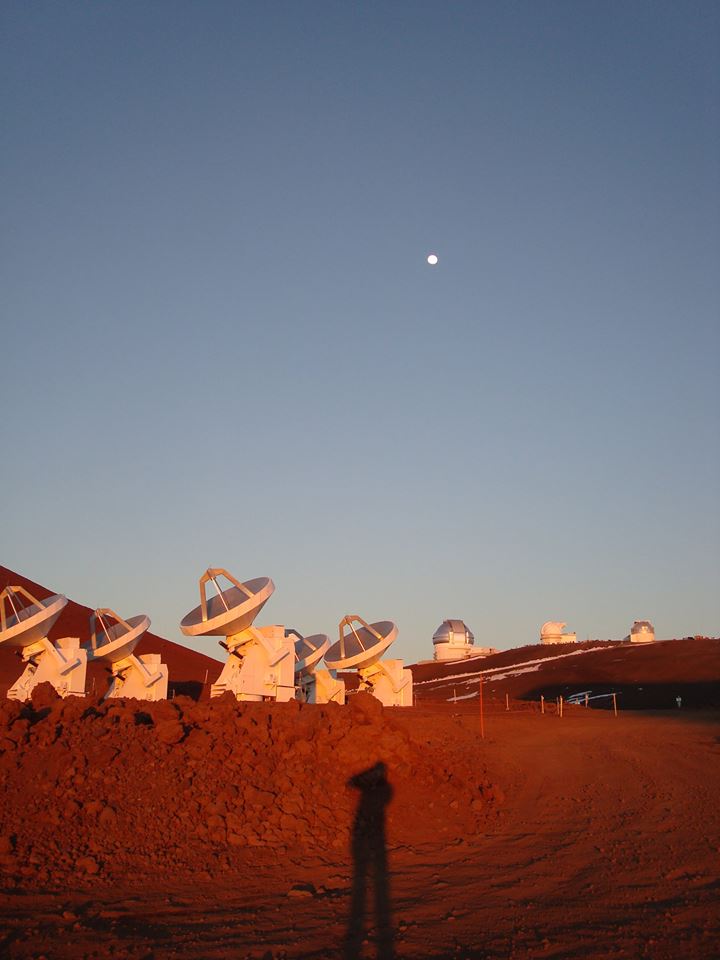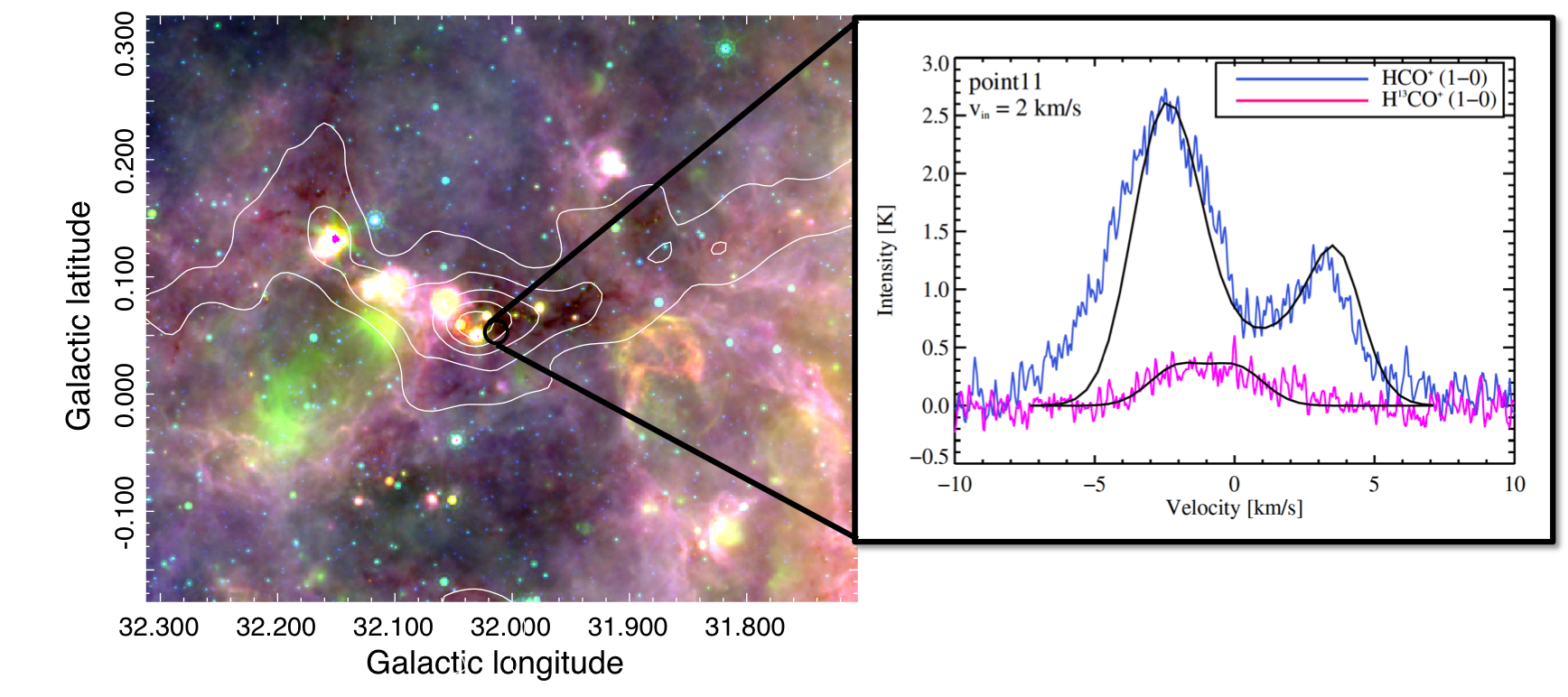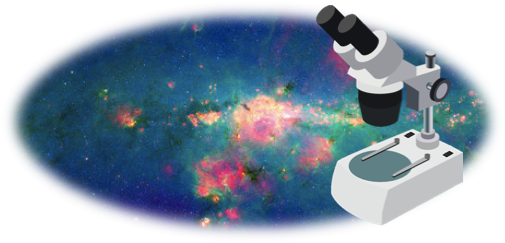cara battersby
Assistant Professor
University of Connecticut

THE MILKY WAY LABORATORY

Our home Galaxy, the Milky Way, is our closest laboratory for
understanding physical processes
throughout the Universe. Submillimeter observations of the cool, dense
gas and dust in our Milky
Way provide insights on universal processes including how stars form in
both 'regular' and 'extreme'environments and how gas is organized on
galactic scales. There are many opportunities for students to become
involved with this research, as is evidenced by my work with five
undergraduate students and one graduate student while at the Center for
Astrophysics.
Currently, I am: 1) leading a
large survey of star formation in the center of our Galaxy, as a window
to understand star formation in the distant Universe, 2) studying gas
accretion in massive star-forming clusters, and 3) mapping the
structure of the Galaxy using long, skinny, very dense clouds, known as
the "Bones of the Milky Way."
Testing Universal Star Formation in our
Extreme Galactic Center
Our Galactic
Center has extreme properties, more similar to high-redshift galaxiesthan our solar neighborhood. I am leading a large survey, the first of its kind, to capitalize on the
close proximity of our Galactic Center to better understand star formation in the early Universe.
Cosmic star formation peaked at a redshift of 2, in conditions vastly different from those we observe in the solar neighborhood. Yet our understanding of this fundamental physical process, the conversion of gas into stars, is rooted in detailed observations of our solar neighborhood. The inner few hundred parsecs of the Milky Way, known as the Central Molecular Zone, is our closest laboratory for understanding star formation in the extreme environments that once dominated the Universe. As the initial phase in using our CMZ as a window into the distant Universe, I am leading the first wide-field, high-resolution (0.2 pc) survey of the CMZ at submm wavelengths, making a comprehensive study of star formation in the CMZ tenable for the first time: the Submillimeter Array (SMA) Legacy Survey of the CMZ.
The Bones of the Milky Way
The basic anatomy of the Milky Way is still poorly understood. Long, skinny clouds tracing spiral arms may help us to fix this. We have several candidate "Bones of the Milky Way" and are working to assemble the full "Skeleton."
Above: Our candidate "Bones of the
Milky Way" (labeled by number, black dots show specific measurements of
the dense gas) on a Galactic longitude-velocity CO map of the Galaxy
(Dame et al. 2001). Various spiral arm models are overlaid to show
their disagreement and how the identification of even a handful of
\Bones" can improve global log-spiral fits to Milky Way structure.
(Figure from Zucker, Battersby, & Goodman 2015.)
Despite decades of research, the structure of our Milky Way, such as
the number and orientation of spiral arms, remains a topic of much
debate. Goodman et al. (2014) argue that very thin, very long Infrared
Dark Clouds (IRDCs) may trace out the densest portion of the spiral
structure of the Milky Way, a much denser version of the dark dust
lanes seen in nearby face-on spiral galaxies. Identifying and
characterizing these “Bones of the Milky Way” may ultimately help
assemble a global fit to the Galaxy’s spiral arm by piecing together
individual skeletal features. We have undertaken a search for more
“Bones of the Milky Way” (figure above and
Zucker, Battersby, & Goodman, 2015) and are working to assemble a
full "Skeleton."
Gas Accretion onto Forming Star Clusters
We have identified the most complete sample of starless proto-clusters in the Galaxy, and it has taught us that star clusters continue to accrete gas as they form. This has a big impact - I want to measure the accretion and how it varies.
Above: The proto-cluster, G32.02+0.05 (Battersby et al. 2014a, 2014b), shows large-scale gas accretion. The background is a three-color IR image (70, 24, and 8 micron). Confimed by radiative transfer models (black line on spectra), the blue-shifted self-absorption profie of HCO+ clearly indicates infall of molecular material. Given the size, densities, and velocities involved, we estimate that this cluster-forming region can roughly double its mass in a Myr. (Figure from Battersby et al., in prep.)
